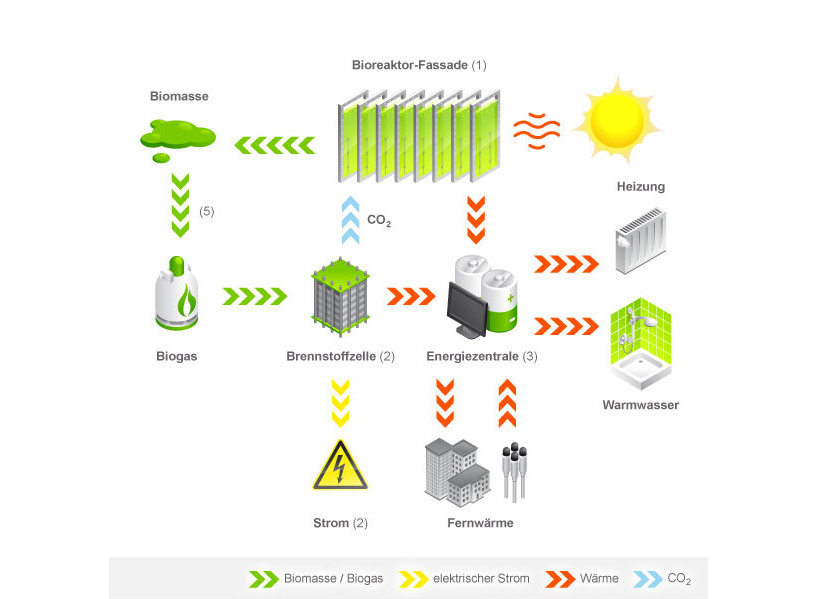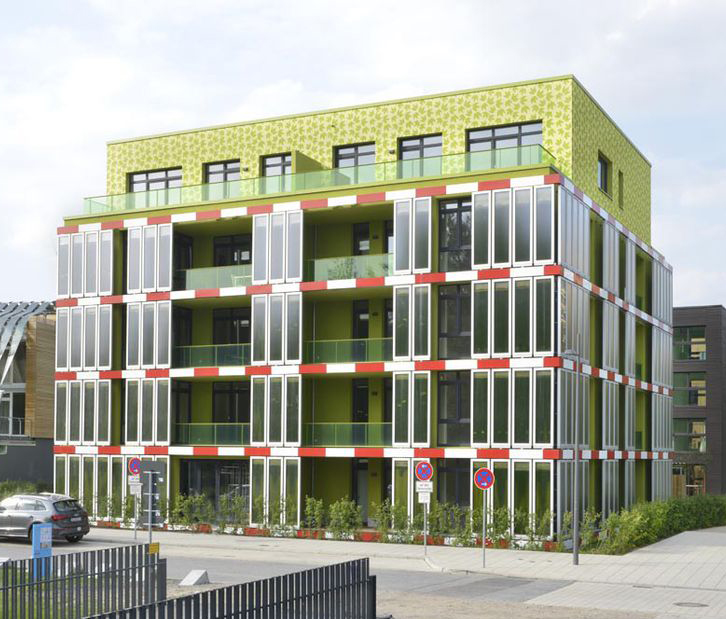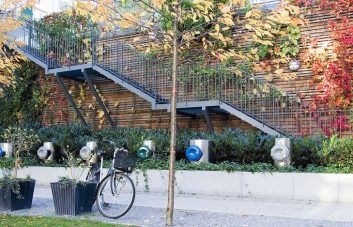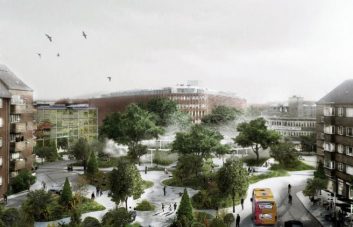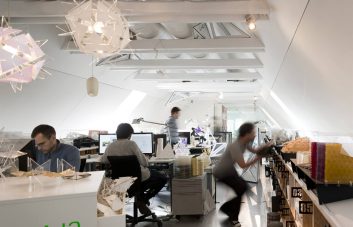Germany – Part of our upcoming travel includes the International Building Exhibition in Hamburg, where we will visit the world’s first algae powered building, the BIQ House, featuring a glass façade that is the first of its kind to generate renewable energy through the use of photobioreactors. Comprised of four panes of glass, two inner panels enclose a growing medium for microalgae, while two outer layers retain heat. The biomass and heat produced by the 200m2 of the aptly-named SolarLeaf façade is enough to supply one third of the hot water and heating for the building’s fifteen residential units, which can also be stored for later use with virtually no energy loss.
This innovative new material provides a relatively easy means of cultivating algae, while adding to the overall impression of the building itself. The panels take up little area from the building’s overall footprint and can be operated year-round, but because algae growth is dependent upon sunlight, they also act as dynamic shading devices—the algae density increase and provides shade when necessary. When technology such as this is integrated early in the design process, bioreactor facades can complement the architectural intent of a building while contributing to a successful energy regime.
